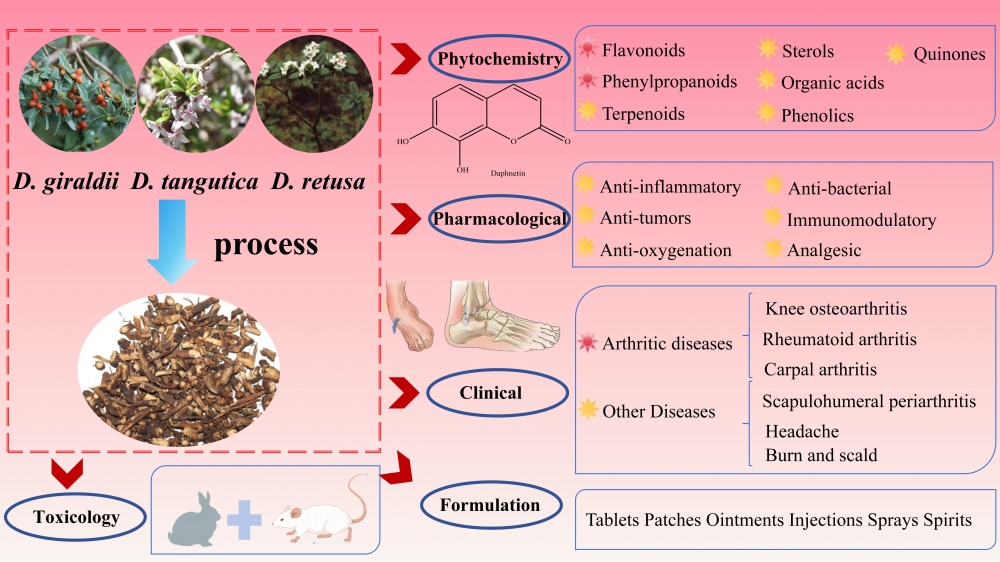JOURNAL 3230
Records of Natural Products
Available Online: September 15,2024
p.1 - 47
http://doi.org/10.25135/rnp.475.2405.3230 (DOI number will be activated after the manuscript has been available in an issue.)
Viewed 87 times.
-
Yaxiao Liu

-
Xinyu Zhang

-
Yuxuan Wang

-
Linwei Dan

-
Jiamei Tang

-
Zitong Yin

-
Xingbo Fang

-
Dongdong Zhang

-
Xiaomei Song

-
Wei Wang

-
Yuze Li

GRAPHICAL ABSTRACT

ABSTRACT
Cortex Daphnes, a traditional Chinese medicine, has been utilized in China for millennia owing to it’s anti-inflammatory and analgesic properties. As it is belonging to the Thymelaeaceae family within the genus Daphne, it has traditionally been employed to dispel wind, eliminate dampness, alleviate pain, and dissipate blood stasis. Consequently, numerous scholars both domestically and internationally have investigated it’s chemical composition, pharmacological effects, and various other aspectsAmong these, daphnetin stands out as the primary active constituent in C. Daphnes, holding significant value as a precursor molecule for drug development. Pharmacological research has demonstrated that compounds and extracts derived from C. Daphnes exhibit notable activities, including anti-inflammatory, anti-tumor, antibacterial, immunomodulatory, antioxidant, and analgesic effects. Clinically, C. Daphnes has a long-standing history of use in the treatment of rheumatic diseases. This presents considerable potential for further development and exploration. According to existing records, C. Daphnes exhibits low toxicity; therefore, refining its processing technology, conducting toxicological studies, and establishing a comprehensive quality standard system are current challenges that need to be addressed. In this review, the botany, traditional uses, phytochemistry, pharmacology, and clinical applications of C. Daphnes, with the aim of providing a valuable reference for its future development and resource utilization was summarized.
KEYWORDS- Cortex Daphnes
- botany
- phytochemistry
- pharmacology
- clinical applications
- adverse effects and toxicology